THIS CONTENT IS BROUGHT TO YOU BY NIBIO - Norwegian Institute of Bioeconomy Research - read more
This colourful bird is thriving in Norway
Many bird species are struggling and declining in numbers. Fortunately, some species are doing well in Norway – such as the European goldfinch.

The European goldfinch is a small, colourful, and fairly social finch. Despite its beautiful appearance, it is not among the best-known bird species in Norway.
When you see a goldfinch for the first time, it’s easy to think it has escaped from captivity. Birds with such bright colours are often associated with southern latitudes.
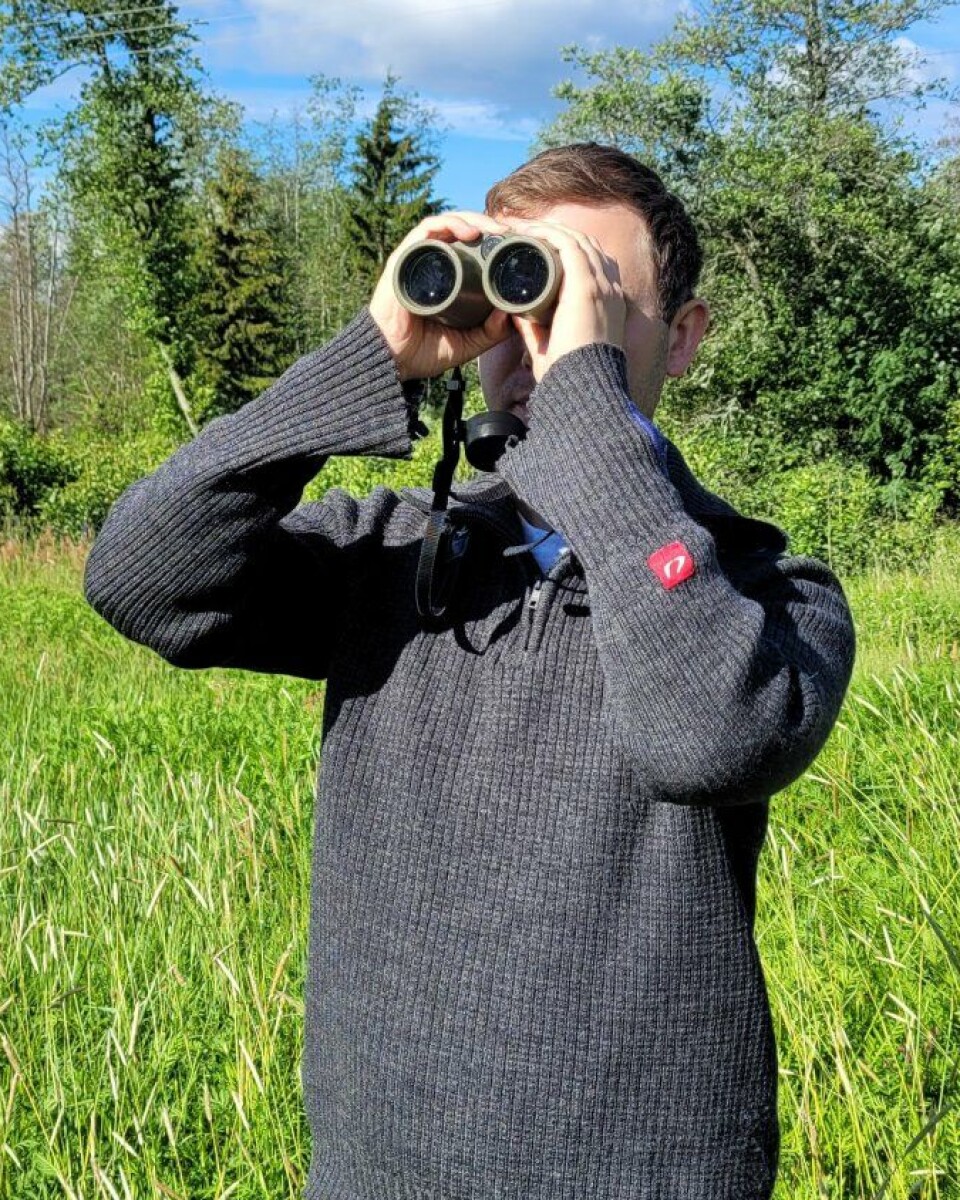
The goldfinch can be recognised by its small, pointed beak, distinctly notched black tail, white rump, red face, and bold black-and-white head markings. The back is light brown and the underside is white. The wings are black with broad yellow wing bars.
In goldfinches, it’s not just the male that has colourful markings. Both sexes look almost identical. Young birds lack the red facial mask but are still relatively easy to identify by their characteristic wing markings.
Specialist in weed seeds
The goldfinch can be found in many different types of habitats, but it avoids dense forest and completely treeless areas. It feeds mainly on seeds, usually taken directly from flowers or seed heads, but can also be seen eating seeds on the ground.
With its small, pointed beak, the goldfinch is specially adapted to feeding on seeds from composite plants such as groundsel, knapweed, thistles, and burdock species.
Despite their bright colours, goldfinches can be surprisingly hard to spot when quietly feeding on weed seeds along roadsides or field edges. When they take flight, it’s often the yellow wing bars that give them away. You often hear them before you see them.
The goldfinch is usually quite social, and outside the breeding season it is often seen in flocks of 5–40 individuals. It can also form larger mixed flocks with other finches, such as siskins, linnets, and greenfinches.
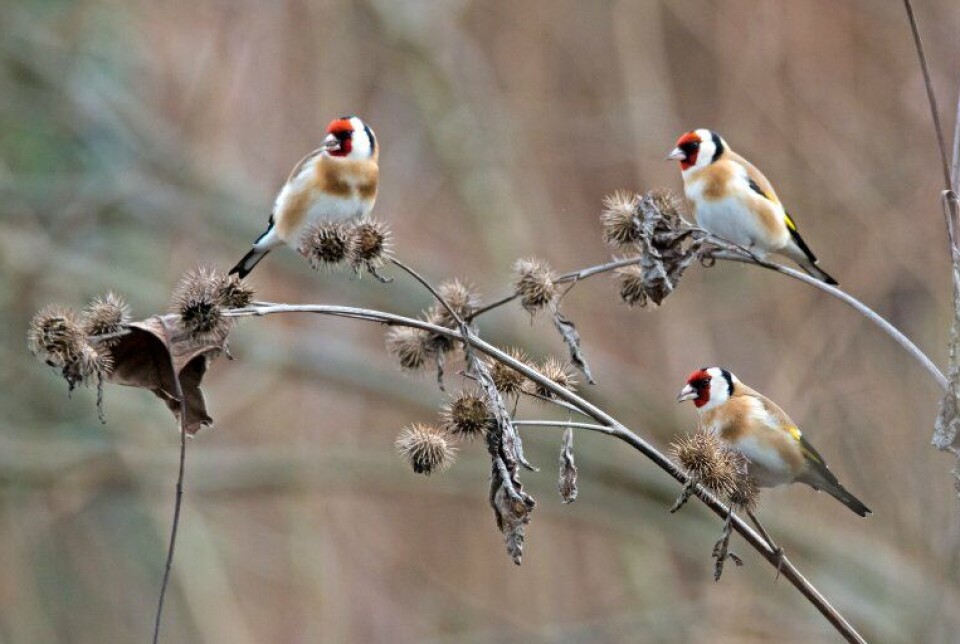
Distribution and population growth
The European goldfinch is naturally found throughout most of Europe, North Africa, and the western parts of Central Asia. It has also been introduced to countries such as Australia, New Zealand, the USA, Uruguay, and Argentina.
In Norway, it is most common in the lowlands of Eastern Norway, especially around the Oslofjord, but also further up the Gudbrandsdal Valley, as well as scattered along the coast from Østfold to Rogaland.
The goldfinch has always been relatively rare in Norway, but in recent decades it appears to have become more common, while also expanding its range both northwards and inland. The species has, for example, established itself in Trøndelag county, where the first confirmed breeding record was documented in 2017.
In neighbouring Sweden, it is one of the breeding birds that has increased the most in number over the last ten years. This may be related to the fact that the species has increasingly begun to visit bird feeders in winter.
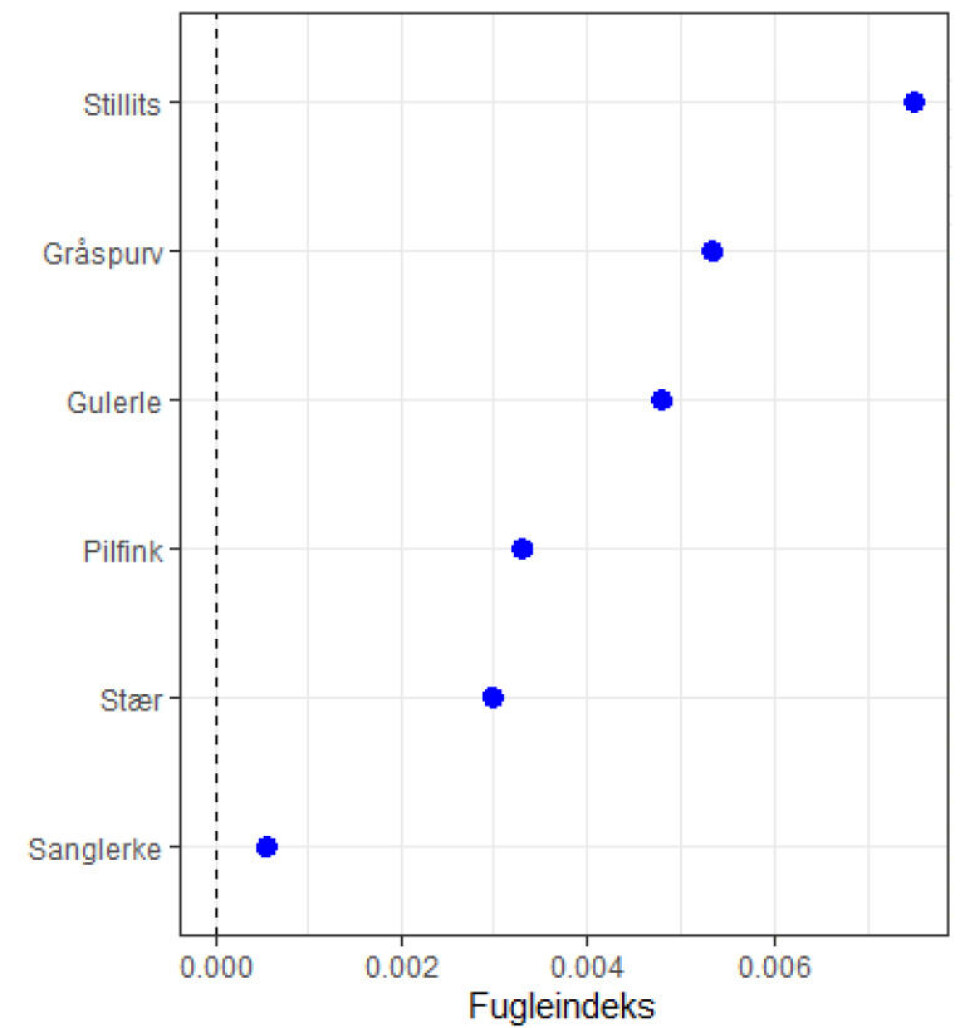
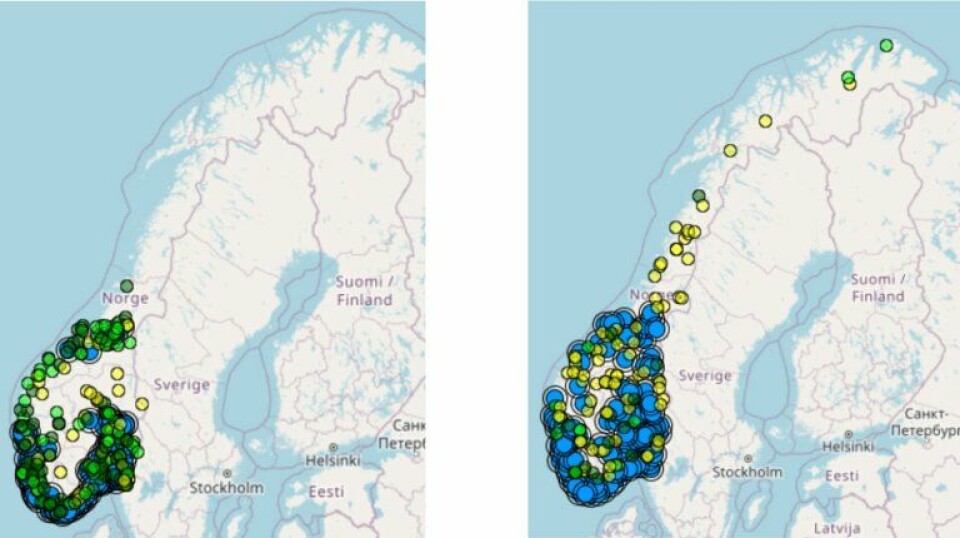
Monitoring prevents change blindness and poor memory
NIBIO researcher Wenche Dramstad explains that it is important to monitor changes over time.
“We humans generally suffer from change blindness and poor memory. We quickly assume that it has always been this way. That’s why monitoring data can help us notice changes in nature. Things may not change dramatically from year to year, but rather gradually and subtly," she says.
There’s a lot of natural fluctuation. Variation between years is more the rule rather than the exception.
For many species, for example, a cold and late spring can have a major impact. The same goes for an extra cold or snowy winter. It’s only when we look at long-term trends that we can really find out whether there is a development in one direction or the other.
"Detecting such changes is a key driver in the monitoring work NIBIO does, for example in the 3Q programme. It was farsighted of ministries and directorates back in 1998 to initiate this monitoring,” she says.
The 3Q monitoring programme is a national monitoring programme for the cultural landscape of agriculture.
At that time, significant changes in the agricultural landscape had been observed, and reports were increasingly pointing out the consequences. Some of these changes posed challenges especially for species that depend on agricultural landscapes, such as the northern lapwing and Eurasian skylark.
Fortunately, there are also species in the agricultural landscape that seem to be doing well over time. Some appear to be increasing in number while also expanding their range.
The beautiful European goldfinch is one of them.
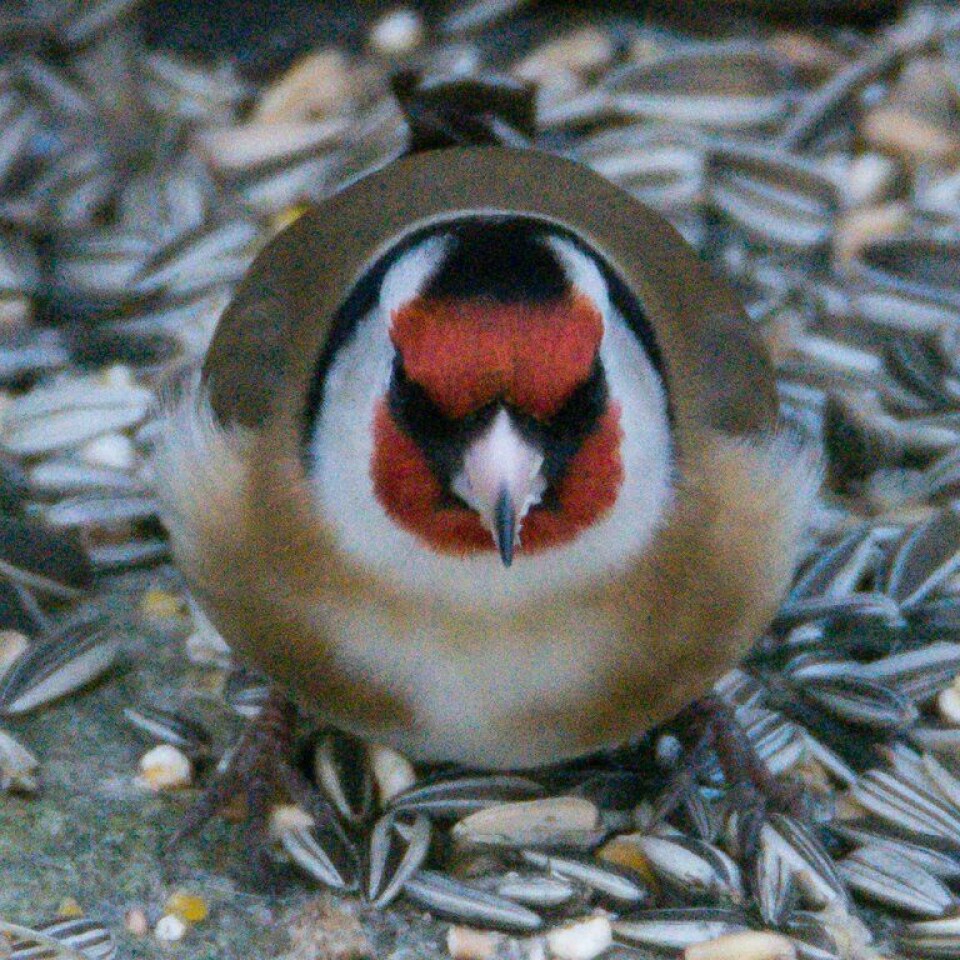

This content is paid for and presented by NIBIO - Norwegian Institute of Bioeconomy Research
This content is created by NIBIO's communication staff, who use this platform to communicate science and share results from research with the public. NIBIO is one of more than 80 owners of ScienceNorway.no. Read more here.
More content from NIBIO:
-
Can drone-mounted tree planting replace manual tree planting?
-
Light traps can tell us more about nocturnal moths
-
Climate change and land use threaten Sámi reindeer husbandry
-
Researchers are now going to monitor carbon in forest and grassland soils
-
Nine facts about Norwegian agriculture
-
Within 10 years, Norway could grow its own melons and avocados




































